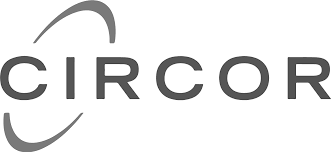Understanding Quality Control (QC)
Quality Control is a systematic process that monitors, evaluates, and improves every step of production – from raw materials to finished products. By catching defects early, QC saves time, reduces waste, and protects brand reputation.
Why Early Detection Matters
Identifying problems at the first stage is far cheaper than fixing them after the product is completed. Think of a seven‑step assembly line – fixing an issue in step 1 avoids re‑work, scrap, and lost labor in the remaining six steps.
Core Elements of an Effective QC System
- Defined Objectives: Clear goals and measurable targets.
- Measurement Infrastructure: Sensors, gauges, software, and data collection methods.
- Data Analysis: Turning raw numbers into actionable insights.
- Continuous Improvement: Applying findings to refine processes.
- Control Mechanisms: Ongoing monitoring to ensure new issues are caught quickly.
DMAIC – The Five‑Step QC Framework
The DMAIC methodology (Define, Measure, Analyze, Improve, Control) provides a repeatable roadmap for quality projects. Below is a quick recipe‑style guide you can follow for any QC initiative:
| Phase | Key Actions | Output |
|---|---|---|
| Define | Set project scope, objectives, and stakeholder expectations. | Project charter & KPI list. |
| Measure | Collect baseline data, calibrate measurement tools. | Baseline data set. |
| Analyze | Identify root causes with charts, Pareto analysis, or fishbone diagrams. | Root‑cause report. |
| Improve | Implement corrective actions, pilot test solutions. | Validated improvements. |
| Control | Standardize procedures, set up control charts, train staff. | Sustained performance. |
Key Quality Control Techniques
- Incoming material inspection
- In‑process inspection and sampling
- Final product testing
- Statistical Process Control (SPC) charts
- Root‑cause analysis tools (Pareto, fishbone)
SPC control charts, originally used in manufacturing, are now common in finance, healthcare, and service industries. They provide a visual cue when a process drifts out of specification.
Industry‑Specific QC Examples
Manufacturing
Use automated vision systems to detect surface defects on assembly lines. Pair this with real‑time SPC dashboards to trigger alerts before a batch ships.
Healthcare
Apply QC to medication dispensing: barcode scanning, double‑checks, and reporting of near‑misses reduce adverse events.
Financial Services
Implement QC on monthly financial statements: automated reconciliation checks catch posting errors early, improving audit readiness.
Tools & Templates to Accelerate Your QC Program
Leverage ready‑made resources to jump‑start quality initiatives:
- Balanced Scorecard and Strategy Map Toolkit – align QC metrics with corporate strategy.
- Automated Excel Reporting – generate SPC charts and variance reports with minimal manual effort.
- Financial Statements Templates – ensure consistent formatting and built‑in validation checks.
- 101 Ways to Boost Customer Retention – integrate quality outcomes into loyalty programs.
Quick QC Checklist
Use this short checklist before each production run or service delivery cycle:
| Item | Completed? |
|---|---|
| Calibration of measurement tools | ☐ |
| Incoming material inspection logged | ☐ |
| SPC control chart updated | ☐ |
| Root‑cause analysis completed for any non‑conformities | ☐ |
| Team trained on corrective actions | ☐ |
Next Steps for Your Business
Integrate quality control with your overall performance management system. Start with a pilot project, apply DMAIC, and scale the proven improvements across the organization.
Ready to turn quality insights into strategic advantage? Explore the Balanced Scorecard and Strategy Map Toolkit and align every quality metric with your business goals.






























